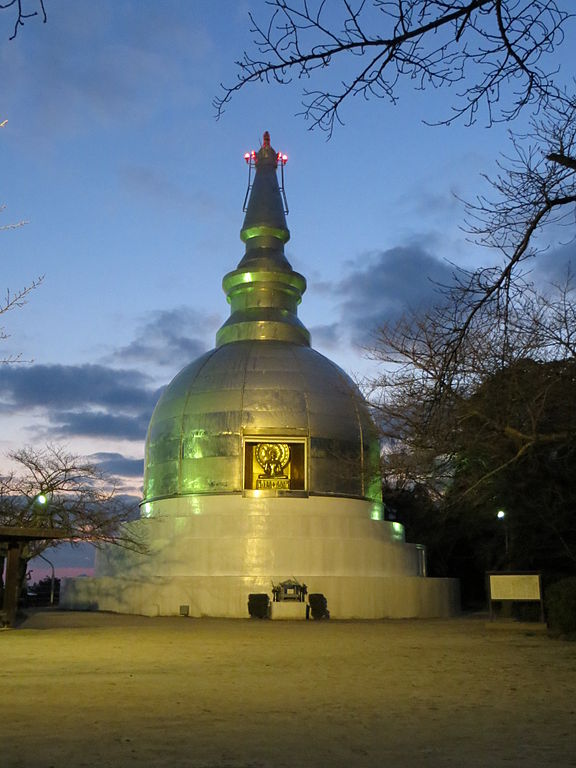Sep 29, 2021
“Take a hike!” in Hiroshima
If you arrive in or depart Hiroshima Station from the East on one of the local trains or Shinkansen, you can see a large silver pagoda on the top of the mountain overlooking the station. Since there are so many other things to do in Hiroshima, many people never bother to find out anything more about it, but the history is fascinating reading, and the area is well worth exploring. The mountain is called Mt. Futaba or Futaba-Yama, and the silver pagoda is called the Silver Peace Pagoda. It was built in 1966 as a memorial to those who died as a result of the atomic bomb and is one of over 80 built throughout the world. Most of the other peace pagodas were built by the Nipponzan Myohoji, a Buddhist sect dedicating to promoting peace. Peace pagodas are a type of Buddhist stupa, and in fact, the one in Hiroshima contains ashes of the historical Buddha. There were donated by the then Prime Minister of India and some Mongolian Buddhist monks. It also has many stones donated by a local resident that represent prayers for peace.
Although you can take a taxi to the top, the best way is to hike. Yes, it is steep, and a number of people have reported that they’ve been puzzled by the exact path due to lack of signage, but when, not if, you reach the top, the view of Hiroshima City and out to the Inland Sea is more than enough reward for your efforts. The hike is part of the Futabanosato Historical Walking Trail and takes 40 minutes to complete. The beginning of the trail is accessed via the Tosho-gu Shrine, which you can walk to from the North exit or the Shinkansen Exit of Hiroshima Station.
Behind Tosho-gu Shrine, you will find Kinko Inari Shrine, a collection of 100 red torii gates that wind up the mountain, and it is through these, you walk up to the Pagoda. The area surrounding the Pagoda is particularly spectacular in spring when the sakura or cherry blossoms are in bloom or during the changing leaves of fall, but you can do the hike any time of the year. If you’re new to hiking or want a short weekend hike, it’s the perfect activity, and of course, being in Hiroshima City itself, it’s easy and convenient to access.
If you prefer a longer hike, there is also the option of walking from Nigitsu Shrine in Ushita all the way to Shokoji Temple, past Hiroshima Station. The trail extends approximately 10km and is particularly popular in spring and autumn when the weather is not too hot and not too cold.
Whichever one you choose, you can be guaranteed lovely scenery and a feeling of accomplishment when you finish.
Additional Hikes
Mt. Misen
Maps and other information are available at the island’s Ferry Terminal. Accidents are rare but not unknown. Bring water, pay attention to trail markers, and allow more time than you think you might need.
Website: Two decent English websites here: http://www.miyajima.or.jp/english/course/course_tozan3.html
and here: http://visit-miyajima-japan.com/en/activities/stroll-and-hike/climbing-mount-misen.html
Sandankyo
If you have a car, you can choose your entry point, though even in this case, the main entrance may be preferable on a first visit.
Access: Buses leave from platform number 7 of the Hiroshima Bus Center, in the Sogo Building downtown. Express buses take about 80 minutes, with a one-way fare of 1440 JPY. Local buses take nearly two hours but leave more frequently. The last returning Express departs Sandankyo’s main entrance at 15:00. After that, only local buses are available, with the final bus at 19:10 going only as far as Kabe JR Station. From there, you’ll need to take a local train back to town.
Website: Excellent info here: http://gethiroshima.com/features/hiking-sandankyo-gorge/ and a useful English language map here: http://akioota-navi.jp/en/text/e_map_sandankyo_s.pdf
Happy Hiking!
Photo by Rich and Angela Housley


About the author